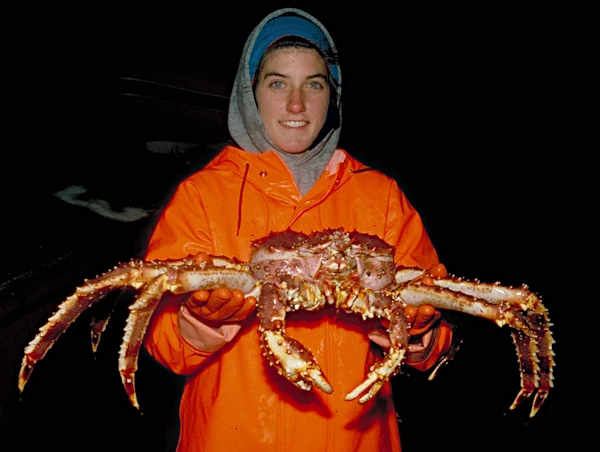
This crab is found in the cold waters of Kamchatka, the Sea of Okhotsk, and along the Aleutians. It mainly lives between 20 and 200 meters depth, preferring sandy-muddy or rocky substrates. Water temperatures between 0 and 7°C limit its growth but favor a notable longevity, often exceeding 30 years.
The King Crab is omnivorous; it feeds on mollusks, crustaceans, organic debris, and algae. It can display gregarious behavior at certain times, especially during migrations to breeding areas. Females release their eggs in shallow waters to maximize larval survival, which involves significant seasonal movements.
| Species | Maximum Span (m) | Maximum Weight (kg) | Habitat / Distribution | Depth (m) | Diet | Longevity (years) |
|---|---|---|---|---|---|---|
| Japanese Spider Crab (Macrocheira kaempferi) | 3.8 | 20 | Japanese coasts, rocky seabed | 50-600 | Algae, mollusks, carrion | 50+ |
| Kamchatka King Crab (Paralithodes camtschaticus) | 1.8 | 15 | Kamchatka, Sea of Okhotsk, Aleutians, sandy-muddy/rocky seabed | 20-200 | Mollusks, crustaceans, algae, detritus | 30+ |
| Alaska King Crab (Paralithodes platypus) | 1.5 | 10 | Alaska, sandy-muddy seabed | 30-300 | Crustaceans, mollusks, detritus | 25+ |
| Snow Crab (Chionoecetes opilio) | 1.0 | 2.5 | Arctic and subarctic oceans, sandy-muddy seabed | 20-400 | Small crustaceans, worms, algae | 20 |
| Tasmanian Giant Crab (Pseudocarcinus gigas) | 0.7 | 13 | Southeast Australia, rocky coasts | 0-100 | Omnivore, carrion | 15-20 |
| Red Crab of Galapagos (Grapsus grapsus) | 0.35 | 0.5 | Galapagos Islands, intertidal rocks | 0-5 | Algae, organic debris | 10 |
| Caribbean Purple Crab (Cardisoma guanhumi) | 0.25 | 0.6 | Caribbean, mangroves and coastal areas | 0-2 | Plants, fruits, insects | 12-15 |
Sources: NOAA Fisheries, National Geographic, scientific publications on marine crustaceans.
Giant crabs, notably the Kamchatka King Crab and Japanese Spider Crab, have a highly developed predatory instinct. Their ability to capture and consume a wide variety of benthic species, including mollusks, small crustaceans, and carrion, can negatively affect local populations. In fragile ecosystems, this predatory pressure may cause imbalances, reducing less mobile species and altering the trophic structure of marine communities.
For example, in areas where the Kamchatka King Crab is introduced outside its natural habitat, local populations of mollusks and invertebrates are severely reduced, triggering cascading effects on fish and birds that depend on these resources. These observations highlight the importance of considering the ecological impact of these predators when evaluating their role in marine biodiversity.